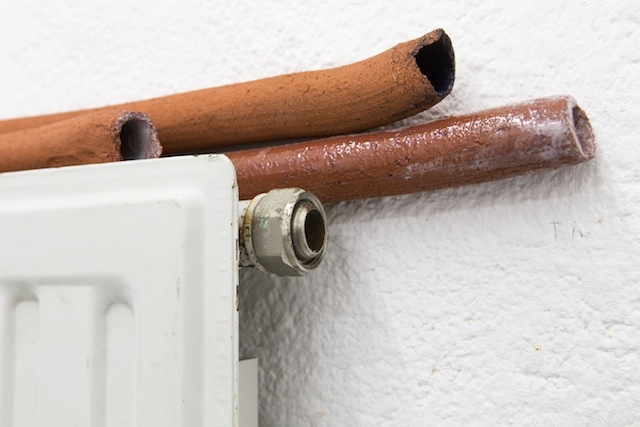June Crespo always makes sense of her work after the fact. It is not simple intuition, but a methodological strategy by which she produces forms and combines them, revealing a tension between the elements manifested in their friction, amalgamation or slight distance. They take their own time to form, to become a more or less stable volume. Crespo’s work operates on the borders of art and language, where words do not suffice but are almost enough. She hints at a series of references to popular culture but intentionally cuts them short before they can enunciate something.
There is a dialectical relationship between the fortuitous, timid forms that result from experimentation with new techniques, and the memory embedded in the accumulation of practice. As Crespo puts it, it’s like a vessel that contains all the manual gestures of all previous vessels. Her sculptures are made up of a series of objects often piled together with images held in between. Found in 1970s magazines or created by the artist, images in Crespo’s work are treated as three- dimensional objects, with a thickness, and are sometimes concealed. In such cases, they become content that is not visible but somewhat present in the assembly of objects granted their own agency.
In her recent work Chance Album no 1 (2016), Crespo deals with those conduits that channel fluids, human and nonhuman, biological and infrastructural. The idea of that which flows beyond sight has led to the production of a series of ceramic pipes glazed on the inside surfaces, adopting traditional techniques learned in a workshop in Galicia. Chance Album No 1 was in part shaped by a picture of a woman shooting heroin that features in a magazine placed within the sculpture: the needle entering through the arm, a fluid meeting another fluid inside the body. The image informs the work – dealing with the idea of concealed, channelled fluids – but it’s invisible to the viewer, yet physically present, vibrating in the assemblage.
Craftsmanship serves to divert intentionality and point at the importance of the incidental that appears in the learning process, finding its place once it has been born as form. This methodology flattens any hierarchical relationship between the elements that are combined in her works, to become plinth, frame and sculpture at the same time. Her work is the result of a series of conscious and unconscious decisions, a translation of the intuitive to the sensuous, of the latent to the visible, without giving into narrative – even if this can emerge later. The human body in relation to space seems to determine the scale of her work and the relationship one can establish with it, but it emerges fragmented, truncated, and yet whole: in the artist’s own words, ‘a closed but broken form’.
Crespo is based in Bilbao and Amsterdam. Her work has recently been shown at ET Hall, Barcelona, and the Museum of Contemporary Art MARCO,Vigo.
From the January & February 2017 issue of ArtReview, in association with K11 Art Foundation
